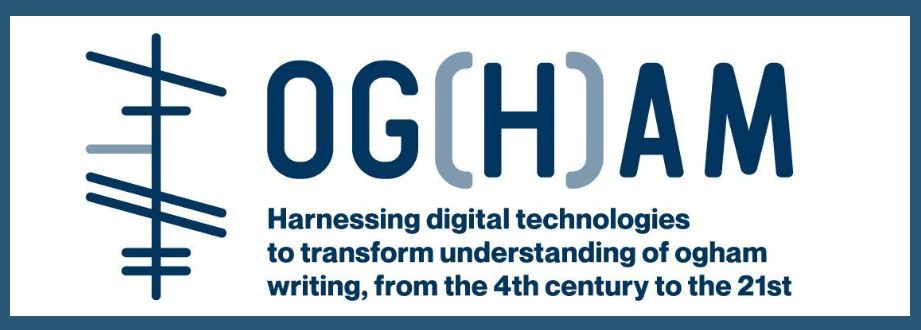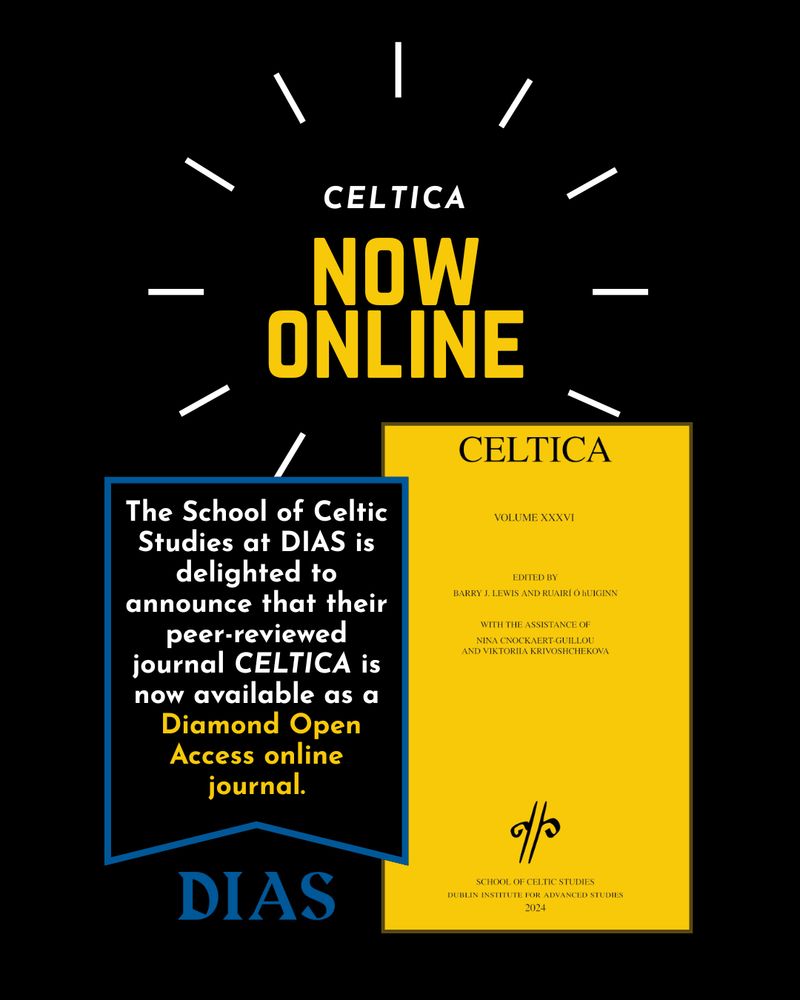Thanks to @silmeth.mstdn.social.ap.brid.gy for the assistance on getting to the bottom of this
13.11.2025 14:03 — 👍 4 🔁 0 💬 1 📌 0
The Wiktionary references will be updated soon to reflect this
13.11.2025 13:58 — 👍 3 🔁 0 💬 2 📌 0

And Cleasby and Vigfusson are authoritative on the Old Norse meaning, suggesting that this is indeed the most likely etymology
cleasby-vigfusson-dictionary.vercel.app/word/i-spen
13.11.2025 13:56 — 👍 6 🔁 1 💬 2 📌 0

Seems like MacBain might have been a source of information here, at least regarding the Scottish Gaelic cognate
en.wikisource.org/wiki/An_Etym...
13.11.2025 13:54 — 👍 6 🔁 2 💬 1 📌 0

𝗗𝗶Ⓐ𝗴𝗻𝗼𝘀𝘁𝗶𝗰 𝗡𝗲𝘄𝘀 20
With the DiⒶgnostic team filled for the moment, we are now making good progress with the project.
In news item 12 in August, I announced that Truc Ha Nguyen, a postdoctoral researcher in the project, was compiling a list of all Old and Middle Irish texts included in...
/1
12.11.2025 19:27 — 👍 8 🔁 4 💬 1 📌 0

Congratulations!
I noticed that in the interpretive editions of inscriptions, where certain interpreted markings seem to be using digital characters that are not currently rendering for me on my phone, such as the i in maqi, and the c in mucoi, in the screenshot example.
12.09.2025 22:46 — 👍 2 🔁 0 💬 1 📌 0
Ogham
Breaking news: The new, revised, updated Ogham in 3D website is now live:
ogham.celt.dias.ie
Choose "inscriptions" in the menu.
12.09.2025 21:31 — 👍 87 🔁 38 💬 2 📌 1

Nua-Chorpas na hÉireann results from texts by native speakers showing many instances of ‘gur ⟨name⟩ an t-ainm a bhí air’ and similar structures, eg. ‘gur John Paul a bhí ort’, ‘gur Micí is ainm dom’, ‘gur Máirtín a bhí ar fhear an phíopa’, ‘gur Bríd a tugadh ort’ without any pronoun after the copular forms.
One interesting rule of #Irish #grammar that many people struggle with, but it seems well alive in native Irish. A 🧵.
If a proper name (of person or place) is referring to the name itself, & not to a specific person, it’s treated as indefinite after the copula.
#Gaeilge #Gaelainn #gramadach
13.05.2025 13:32 — 👍 11 🔁 3 💬 1 📌 1
The most useful definition, it seems, lies in the diatopic distribution of isoglosses within a group of lects that share a common diachronic ancestry. Within such a spectrum, a dialect may be understood as the geographic convergence of isoglosses.
31.08.2025 21:36 — 👍 3 🔁 0 💬 1 📌 0
Since there are no precise, quantifiable parameters to determine where a dialect ends and a language begins, I have always found the concept of “dialect” to be somewhat imprecise.
31.08.2025 21:36 — 👍 4 🔁 1 💬 1 📌 0

🎆 LAUNCH 🎆
The team of the Glasgow-Maynooth OG(H)AM project have the pleasure of launching the revised & updated
𝗢𝗴𝗵𝗮𝗺 𝗶𝗻 𝟯𝗗 database
Where: Royal Irish Academy @ria.ie
When: 12 Sept 2025, 15:30
@maynoothuniversity.ie @uofglasgow.bsky.social in collaboration with @scs-dias.bsky.social @dias.ie
28.08.2025 10:08 — 👍 71 🔁 22 💬 2 📌 0

Where do we go from here?
Old Irish grammars - past, present and future
This article looks at the history and development of Old Irish grammars: the pre-Thurneysian past, Thurneysen's Grammar of Old Irish and its central position in current Celtic Studies, and what future grammars will look like.
A preprint of the article: www.academia.edu/143690919/Wh...
29.08.2025 17:26 — 👍 11 🔁 5 💬 0 📌 0
If you already have a Discord account, or are willing to create one, the best places to practice Irish, learn dialects, and access resources are these two places:
discord.gg/craiclegaeilge
discord.gg/u7F5yR7g
I'd be happy to discuss things in more detail there as I'm not on Blue Sky as much
22.08.2025 20:00 — 👍 1 🔁 0 💬 0 📌 0
This is generally true with the various dialects, but especially in Munster which tends to have much weaker Gaeltacht regions than the other provinces, though Kerry Irish is still relatively strong in the area.
22.08.2025 19:57 — 👍 0 🔁 0 💬 1 📌 0
The only place you'll generally find Déise Irish today is in the Waterford Gaeltacht regions. And even then, the dialectal features have been fading with each generation over the last few decades. The youngest speakers today might have a few Déise Irish features, but not to the same extent as before
22.08.2025 19:56 — 👍 0 🔁 0 💬 1 📌 0
There are plenty of resources, but not really anything at a beginner level if you're only starting out. In fact, Munster Irish doesn't tend to have the best beginner resources compared to the other dialects, but there is plenty written about the Munster dialects, both living and dead.
22.08.2025 19:54 — 👍 0 🔁 0 💬 1 📌 0
The Irish language in that region of Tipperary when it was spoken would have indeed been part of the Déise dialect. South Tipperary Irish had some interesting features, but it was essentially Déise Irish in general. The last speakers in the region died out in the 1960s.
22.08.2025 19:52 — 👍 0 🔁 0 💬 0 📌 0
Sure! Happy to help however I can.
20.08.2025 16:39 — 👍 0 🔁 0 💬 1 📌 0
I'm very intrigued! Can you share or link to any information about this new database?
25.06.2025 09:30 — 👍 2 🔁 0 💬 2 📌 0

Friends & colleagues, the amazing OG(H)AM project, a collaboration between Dept. of Celtic & Gaelic @uofglasgow.bsky.social & Dept. of Early Irish @ceilteachomn.bsky.social @maynoothuniversity.ie @muahi.bsky.social is slowly coming to an end.
With a smile & a tear, I present the final instalment...
25.06.2025 08:11 — 👍 46 🔁 17 💬 2 📌 1

🚨 Celtica is now available open-access! This is the result of painstaking work going on behind the scenes since 2022. Issues 33 to 36 (2021–24) are now online, and future issues will appear online & in print. We will also digitize the back issues of the journal.
🔗 journals.dias.ie/index.php/ce...
23.06.2025 07:25 — 👍 80 🔁 34 💬 4 📌 3

A huge shipment of my books on ogam inscriptions & Cisalpine Celtic has just come in, incl. the Spanish translation of my ogam book! (Plus books on Gaulish & Celtiberian.)
My books will be on sale in the Maynooth bookshop (shop.universitybooks.ie/Books/Ogam-L...), the @nmireland.bsky.social shop...
12.06.2025 13:06 — 👍 46 🔁 14 💬 2 📌 4


Hugh MacCurtin's 1728 "The Elements of the Irish Language"
15.05.2025 08:10 — 👍 4 🔁 0 💬 0 📌 0

There's also an “á bé cé dé...” system. The earliest reference to this system I could find is the 25th edition (1890) of "An Cheud leabhar Gaedhilge - First Irish book". Perhaps earlier editions had it too, but this is the earliest I could see.
archive.org/details/cheu...
15.05.2025 08:03 — 👍 4 🔁 0 💬 1 📌 0
2) While I don't yet know what this data contains, in your own view of the data (and I know you mentioned that no particular diatopic distributions of the variations has yet been identified), do you think there could be any basis to comparing modern isoglosses with the current data set?
08.05.2025 17:59 — 👍 1 🔁 0 💬 0 📌 0
@davidstifter.bsky.social Very interesting lecture today, thanks! You mentioned yourself and team have currently identified 300+ synchronic variations in Old Irish.
1) Is any of that data currently published anywhere? I'd love to see it whenever it is published.
08.05.2025 17:59 — 👍 1 🔁 0 💬 1 📌 0

𝗗𝗶Ⓐ𝗴𝗻𝗼𝘀𝘁𝗶𝗰 𝗡𝗲𝘄𝘀 8
A full month has passed since the last DiⒶgnostic News, owed to the Easter break and other major matters and occurrences that required my attention.
Before I continue speaking about the revision of the CorPH database, I want to give an update of other project-related activities.
/1
02.05.2025 08:49 — 👍 2 🔁 2 💬 1 📌 0

One for your diary:
Kathleen Hughes Memorial Lecture by David Stifter
"Linguistic Contributions to a Model for the Celticisation of the Western Archipelago"
Thursday 8 May, 17:00
Department of Anglo-Saxon, Norse and Celtic, University of Cambridge
Register at: www.asnc.cam.ac.uk/news/event/8...
14.04.2025 09:54 — 👍 55 🔁 15 💬 3 📌 1

𝗗𝗶Ⓐ𝗴𝗻𝗼𝘀𝘁𝗶𝗰 𝗡𝗲𝘄𝘀 7
Anybody who has used the CorPH database of Old (and Middle) Irish texts in the past (chronhib.maynoothuniversity.ie/chronhibWebs...) will have made the experience that it is – to put it mildly – not easy to use. For this reason, a complete overhaul of the user interface of...
/1
01.04.2025 15:38 — 👍 7 🔁 3 💬 2 📌 0
She/her. Research Affiliate at the University of Glasgow. Govan Old and OG(H)AM; researching Digital Imaging and Early Medieval Sculpture
sí/her • Post-Doctoral Researcher, @disappearingtext.bsky.social UCC • Medieval + Early Modern Irish language ⁊ literature, fiannaíocht ⁊ Acallam na Senórach, manuscripts, DH, narratology • https://orcid.org/0000-0002-7007-5935
Unfiltered news. Bold opinions. A new media organization from @mehdirhasan.bsky.social
https://zeteo.com
Editor and CEO, Zeteo
Author, ‘Win Every Argument’
British-American
Historical Linguist, Indo-Europeanist (especially interested in Greek, Italic, Vedic, Tocharian, Old Irish, Anatolian). Cornell Linguistics
Digital Humanities researcher for the #OG_H_AM project at Maynooth University.
Text encoding, medieval manuscripts, marginalia, and inscribed objects.
Digital Officer @toebi.bsky.social. (she/her)
🇵🇸🇱🇧🇨🇩🇸🇩
Àrd-òraidiche | Senior Lecturer @ University of Edinburgh | Historical (sometimes socio-)linguistics of Irish, Scottish Gaelic and Manx | manuscripts and literature | dialectology | Gaelic Caribbean | #siaradcymraeg
Teangeolaí, oifigeach pleanála teanga in Uíbh Ráthach.
Historian of early modern Ireland and England; part of léamh.org team (Learn Early Modern Irish); co-director of Democracy and Dialogues at UConn Dodd Human Rights Impact
Dublin Institute for Advanced Studies (DIAS) is the world’s second, and Ireland’s only, Institute for Advanced Studies. We perform advanced, fundamental, research across our three Schools - Celtic Studies, Theoretical Physics, and Cosmic Physics.
Fostering excellence and scholarship to enrich society, e. 1785.
Home to the RIA Library, 8 research programmes & a publishing house.
www.ria.ie
Reg. Charity No. 20003524 - Reg. Revenue No. CHY 2795
Research into the Celtic languages, literatures and cultures.
Taighde ar na teangacha Ceilteacha agus na litríochtaí agus na cultúir a bhaineann leo. 🔗 https://www.dias.ie/celt/
Bsky account of Patricia Ronan.
Linguist at TU Dortmund University, interested in language variation, contact and change, Gaelige. All views my own.
Lecturer in Irish Cultural Heritage & Early Irish, Maynooth University.
Early Irish language, literature & the Irish manuscript tradition.
https://www.maynoothuniversity.ie/faculty-arts-humanities/our-people/chantal-kobel
Professor of Celtic Studies & Head of the Department of Early Irish at Maynooth University. History of medicine & linguistics; early Irish literature; manuscripts; #Gaeilge
https://www.maynoothuniversity.ie/faculty-arts-humanities/our-people/deborah-hayden
Tá Roinn na Sean-Ghaeilge, Roinn na Nua-Ghaeilge, Lárionad na Gaeilge, agus Oidhreacht Chultúrtha na hÉireann sa Scoil.
The School contains the Department of Early Irish, Department of Modern Irish, Lárionad na Gaeilge and Irish Cultural Heritage.
NY Times bestselling author of the Darth Bane novels. Lead writer Mass Effect and KOTOR. Currently at Archetype Entertainment.
www.drewkarpyshyn.com
Tionscadal digitithe Chnuasach Bhéaloideas Éireann/Digitizing National Folklore Collection of Ireland. Páirtnéireacht @gaois Fiontar agus Scoil na Gaeilge, DCU agus Cnuasach Bhéaloideas Éireann, UCD
Craoltóir / Broadcaster 🎤🎥
Gaoth Dobhair, Dún na nGall

















